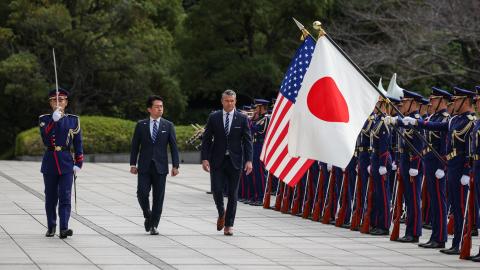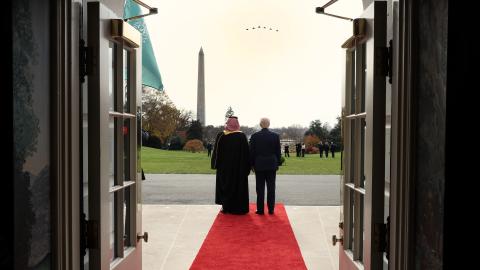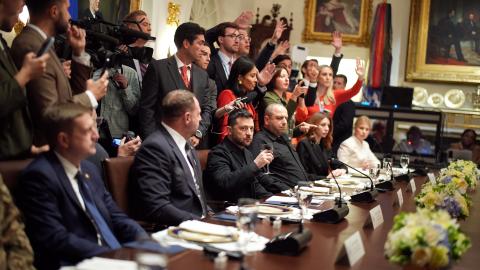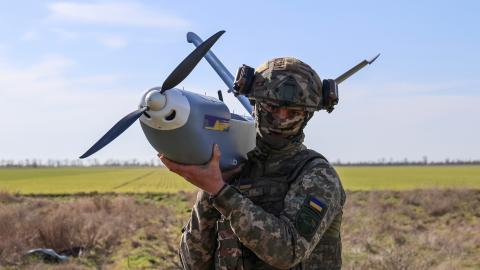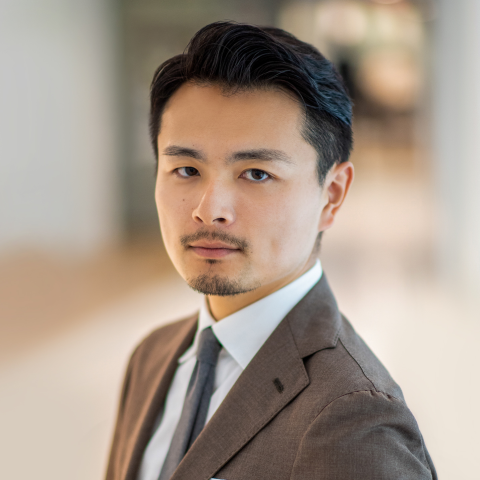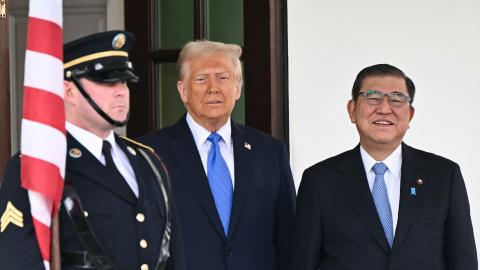On February 6, Japanese Prime Minister Shigeru Ishiba became the second world leader to meet with President Donald Trump in his second term. Ishiba had three goals for this important visit:
- Affirm the United States–Japan alliance and deepen bilateral security cooperation
- Demonstrate Japan’s commitment to balancing the trade deficit and avoiding tariffs
- Establish a working and, if possible, personal relationship with Trump
Despite domestic political difficulties and the high expectations that Shinzo Abe set during Trump’s first term, Ishiba was able to achieve these three significant targets. In a short 36-hour visit, he laid the groundwork for continued engagement within the world’s most consequential alliance.
Below is an analysis of how he was able to do so.
Security
Security is the basis of the US-Japan alliance, which has been in place for more than 80 years. Ishiba’s foremost objective in Washington was to work with Trump to reaffirm the importance of US-Japan ties and expand their scope to address persistent and emerging challenges.
The prime minister achieved these goals and more. In the joint statement, the two leaders recognized Washington’s commitment to protecting Japan with US forces’ full range of capabilities. This includes extended deterrence, which places Japan under the American nuclear umbrella. The statement also reaffirmed that article V of the US-Japan Treaty of Mutual Cooperation and Security applies to Japan’s Senkaku Islands, which China claims.
In return, Japan recognized its own role in maintaining peace and security in the Indo-Pacific region. Ishiba reacknowledged the 2015 Legislation for Peace and Security. Former Prime Minister Abe spearheaded this agreement, which created the basis for closer US-Japan operational cooperation.
Most surprisingly, in their statement Ishiba and Trump said they “opposed any attempts to unilaterally change the status quo by force or coercion,” in reference to the Taiwan Strait. This newly introduced language demonstrates that Tokyo and Washington are focused on China’s increasing grey-zone tactics, such as the use of quarantine or a de facto blockade with law enforcement and paramilitary vessels, along with the possibility of an outright invasion of the islands.
The two leaders also agreed to advance the operationalization of the US-Japan security alliance through future Security Consultative Committee (Security 2+2) meetings to implement several initiatives. Key issues include upgrading Japanese and US forces’ command and control framework, increasing the US presence in Japan’s Southwest Islands, and advancing defense equipment and technology cooperation. The latter item entails advancing coproduction, co-development, and co-sustainment initiatives to bolster the allied supply chain and strengthen US and Japanese defense industrial capacity. The leaders also agreed to expand bilateral cybersecurity cooperation by leveraging new technologies such as artificial intelligence and resilient cloud services.
Additionally, the president and prime minister expressed their commitment to existing multilateral cooperation. The statement emphasized the Quadrilateral Security Dialogue (QUAD) and the Japan–US–South Korea, Japan-US-Australia, and Japan-US-Philippines trilateral relationships.
Tokyo will need to increase its defense spending to support these avenues of cooperation. The joint statement referenced Japan’s efforts “to fundamentally reinforce its defense capabilities beyond [fiscal year] 2027.” This was a politically sophisticated way to affirm Japan’s defense expansion without specifying a percentage target. The mention of 2027 was a recognition of Japan’s 2022 Defense Buildup Program, which set a goal of spending 2 percent of gross domestic product on defense by 2027. The statement’s more ambiguous phrasing seems to acknowledge that the yen’s weakness has limited Japan’s purchasing power. Costs of both domestic and American equipment have increased by 20 to 60 percent compared to previous estimates. Therefore, even if Japan reaches the 2 percent target by 2027, it will fall short of the projected defense capabilities it set out in 2022. The statement’s language allows the Japanese government to make the case to voters that higher defense spending—perhaps 3 percent of GDP—may be necessary.
As the Trump administration’s political appointees take their positions, the US and Japan will begin implementing these commitments through the Security 2+2 and other working-level groups. The White House and Pentagon will focus on drafting the new US National Security Strategy and other strategic documents. Meanwhile, the Ishiba government faces the prospect of upper house elections in July, which will affect its ability to strengthen its defense efforts.
Despite these variables, the largely anodyne security sections of the joint statement are a success for the prime minister. The more interesting aspects, such as the language concerning Taiwan and Japanese defense spending, highlight possible directions of future discussion and cooperation.
Economics
If security is the foundation of the US-Japan alliance, economics is the lifeblood. After Trump announced tariffs of 25 percent against Canada and Mexico and 10 percent against China, Ishiba’s task was to reassure the president that Japan supported his economic and trade priorities to avoid similar tariffs.
The most effective way for the prime minister to reassure Trump was to commit to expanding Japanese imports of American energy, especially liquified natural gas (LNG). Increasing US LNG exports, both from existing sources in the Gulf of America and new sources such as the North Slope of Alaska, has been a priority of Trump and influential senators such as Bill Hagerty (R-TN) and Dan Sullivan (R-AK). Tokyo is well positioned to accept American LNG production thanks to Japan’s dominance in LNG shipping, power generation, financing and contracts, and turbines. Japanese firms are well established in Southeast Asia and can support the region’s 4 percent annual energy demand growth. By providing the region with reliable American LNG, the US and Japan can supplant Chinese energy initiatives, which come with strings attached.
Because Japanese support for American LNG makes sense from trade balance, energy security, and geopolitical perspectives, it is an easy point of economic cooperation for Trump and Ishiba. The prime minister pledged to expand Japanese purchases of American LNG, ammonia, and bioethanol (which is critical to American farmers who might be targeted by retaliatory Chinese tariffs). He praised the prospect of stable sources of reasonably priced American LNG under the new administration—in contrast to Tokyo’s disappointment with the Biden administration’s decision to limit LNG exports.
Ishiba also addressed the president’s economic priorities by pledging to increase Japanese foreign direct investment (FDI) in the US from $800 billion to $1 trillion. Japan is already the top foreign investor in the US and supports nearly one million American jobs, with more than half (529,000) in manufacturing and industry. Trump and his chief cabinet picks, such as Secretary of Commerce–designate Howard Lutnick and US Trade Representative–designate Jamieson Greer, have expressed a desire for the US to become a “country of producers.” Initiatives such as Fujifilm’s pharmaceutical facility in North Carolina, Toray’s carbon fiber facility in South Carolina, and Masayoshi Son’s pledge to invest $100 billion in the Stargate AI project demonstrate Japan’s commitment to strengthening American manufacturing and unleashing the potential of American workers.
A deal that reemerged at the summit was Nippon Steel’s investment in US Steel. In January, President Joe Biden blocked Nippon Steel’s $14.9 billion offer to purchase US Steel, citing national security concerns. In his conversation with Trump, Ishiba argued that the deal would (1) transfer Nippon Steel’s industry-leading steel technology to US Steel, (2) strengthen America’s steel production and supply chains, and (3) protect the US market from Chinese steel overcapacity and dumping. At their joint press conference, Trump announced that Nippon Steel “will be making an investment rather than a purchase.” In a later interview, Ishiba suggested that there was a pathway to keep US Steel American owned while securing substantial financing and technology transfer from Nippon Steel.
The parameters of such a move remain unclear. But Trump’s conversation with US Steel CEO David Burritt and Nippon Steel CEO Eiji Hashimoto’s upcoming visit to the White House suggest a possible resolution that would benefit all involved parties—including local union steelworkers and community leaders, who overwhelmingly support this partnership.
Given his consistent emphasis on addressing American trade imbalances, it was unsurprising that Trump remained committed to resolving Japan’s $68.5 billion trade surplus with the United States. It is worth noting that the Japanese surplus has decreased from 65.5 percent of US-Japan trade in 1991 to just 6.7 percent in 2023. That figure, along with Ishiba’s promises to expand Japanese investments in the US and purchases of American energy, likely figured in the president’s confidence that the bilateral trade issue could be handled without resorting to flat tariffs—the prime minister’s primary economic objective of this trip.
Personal Relationship
Perhaps where Prime Minster Ishiba was most successful was in establishing a good start to his personal relationship with Trump. Interpersonal chemistry, not policy, was always seen as the most fraught aspect of the prime minister’s trip for three reasons.
First, there were concerns about the differences between the two leaders’ personalities. Though Ishiba has a reputation among the Japanese public as a thoughtful figure with an affinity for military matters and model trains, observers questioned how Trump, a blunt and hard-charging negotiator, would respond.
Second, some worried about the prime minister’s weak political position at home. Ishiba’s Liberal Democratic Party (LDP) and coalition partner Komeito lead a minority government. The political situation in Tokyo means that the prime minister could potentially struggle to deliver what he negotiated with the president; some worried that Trump would be reluctant to work with a prime minister who might soon be replaced.
Third, Ishiba stands in the shadow of the late Abe, who forged a strong personal and diplomatic relationship with Trump. Reports that Trump and First Lady Melania Trump frequently spoke with Abe’s widow, Akie Abe, following the prime minister’s untimely assassination strengthen this perception. Trump also invited Mrs. Abe to Mar-a-Lago last December. So while Ishiba may have benefited from the example and groundwork Abe set out, the current prime minister’s longtime rivalry with Abe likely limited this advantage.
Fortunately, Ishiba largely overcame these challenges ahead of his visit. Rumors in Tokyo suggested that the LDP, looking for stability in the face of political headwinds, was willing to keep Ishiba in charge regardless of the results of the July upper house election. In addition, Ishiba’s advisors worked to ensure that the prime minister was briefed on all potential policy matters to ensure he could engage with Trump directly and confidently. Finally, credit also goes to Mrs. Abe for her work in engaging with the president, both at Mar-a-Lago in December and at the inauguration in January.
But ultimate credit goes to the prime minister for connecting with Trump effectively. Trump undoubtedly appreciated Ishiba’s expression of admiration for the president’s fist pump after his attempted assassination. In return, Trump gave Ishiba a vote of confidence, praising him for his leadership and describing the prime minister as “a very strong person.” On the dicey issue of North Korea, Ishiba carefully acknowledged Trump’s desire for personal diplomacy with Kim Jong Un, but gently reminded Trump that any agreement should address North Korean denuclearization and Japanese abductees. Finally, the prime minister’s deft sidestep when a reporter asked about reciprocal tariffs—that he was “unable to respond to a theoretical question”—elicited a chuckle from the president.
Conclusion
Press conferences and one-day summits cannot sustain alliances and relationships between state leaders. American and Japanese government officials will now begin the hard work of implementing these measures to enhance bilateral security and economic cooperation. How Japanese and American forces will establish greater interoperability and how private Japanese firms will expand their purchases of American LNG will be important to ensuring the alliance’s ability to deliver results in a challenging and uncertain global environment.
But the president and prime minister’s rapport and the positive joint statement demonstrate that both sides recognize the importance of this alliance and will work to ensure its continued success and influence.
